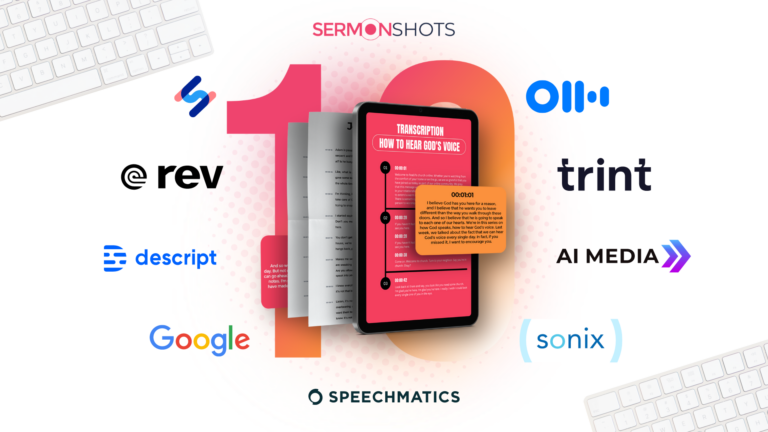AI transcription tools are becoming essential for churches aiming to enhance accessibility, expand reach, and preserve messages. These tools enable seamless transcriptions of sermons, making church activities available to a wider audience and ensuring messages are remembered beyond the moment they are delivered.
Why AI Transcription Tools Matter
Enhancing Accessibility
AI transcription tools provide real-time captions that allow everyone, regardless of physical ability, to fully participate in church services. This inclusivity fosters a supportive community where all members can experience worship without barriers.
Expanding Reach
The ability to share transcribed sermons extends the church’s message beyond local walls, creating a global congregation. It allows for connectivity and interaction with members from different regions, thus building a virtual community.
Preserving Sermons
AI tools act as digital archivists, preserving the spoken word in a format that can be indexed and revisited endlessly. This not only saves valuable teachings from being forgotten but also provides future generations with access to historical insights.
Saving Time and Effort
Automating transcription frees church staff from the time-consuming task of manual note-taking. This efficiency enables them to focus more on community outreach and other essential church functions.
Supporting Language Diversity
By offering translations, AI transcription tools bridge language barriers and invite non-native speakers to engage more fully. This leads to a more inclusive environment where everyone feels their cultural background is respected and incorporated.
Comprehensive Look at Top Tools
1. Sermon Shots
Sermon Shots is designed specifically for church use, offering an intuitive user experience that makes it easy to transcribe sermons accurately.
- Pros: The interface is crafted with simplicity, ensuring even those unfamiliar with technology can navigate it smoothly. With its high level of transcription accuracy, users can rely on it to capture the true essence of spoken words.
- Cons: However, the pricing may prove to be a challenge for smaller churches, requiring careful budget considerations. Additionally, the brief free trial period may not provide enough time to fully test and evaluate all features.
2. Otter.ai
Otter.ai offers a versatile and mobile-friendly solution for churches looking to capture sermons and interactions in real-time.
- Pros: Its robust mobile app ensures that transcriptions are at your fingertips wherever you may need them. The real-time transcription feature engages congregations by providing immediate access to sermon text.
- Cons: Unfortunately, the accuracy can suffer in noisy environments, leading to additional time spent correcting errors. The free plan offers only limited transcription minutes.
3. Rev.com
Known for combining AI technology with human transcribers, Rev.com offers a unique blend of speed and personal touch in transcription services.
- Pros: Fast delivery is a staple of Rev.com, allowing church staff to receive their transcripts without delays. The added human touch ensures that nuances and context are captured.
- Cons: The cost structure, charging per minute of audio, can quickly escalate. Without specialized formatting, users may face limitations.
Conclusion
Selecting the right AI transcription tool for your church involves balancing feature sets, cost, and specific congregational needs. These tools provide more than just convenience—they offer a pathway to inclusive, efficient communication and outreach in the digital age. Explore free trials or demos to determine the best fit. Consider what aligns with your church’s mission and engage in thoughtful discussion to make an informed choice.





